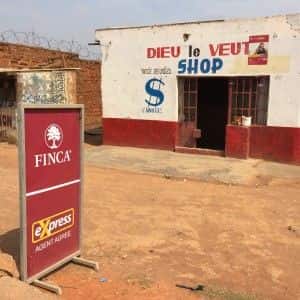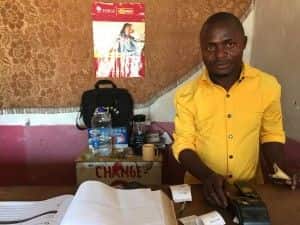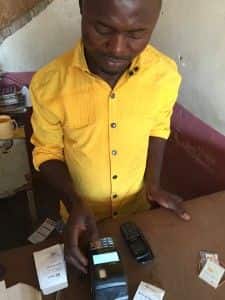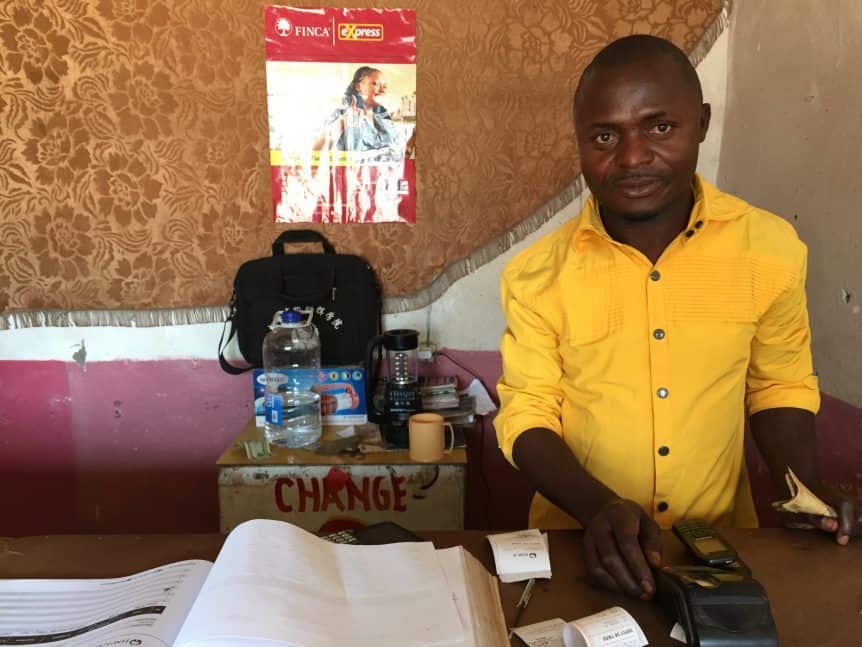Zoe So joined Whole Planet Foundation in June 2016 as a Program Manager supporting the Africa and Middle East portfolio. She worked at BRAC USA for three years, where she supported financial inclusion and youth empowerment initiatives in Uganda, Tanzania, and Sierra Leone. Zoe has also worked in operations, grant management, and monitoring and evaluation in Afghanistan and the Democratic Republic of Congo, and served in the Peace Corps as a small enterprise development volunteer in Senegal.
Agent Banking and Point of Service Machines
 Microfinance institutions seek to deliver quality financial services to an untapped market: people who are not part of the formal banking system. The barriers of entry to formal banks can be very high, including minimum balances to maintain accounts, transaction fees, and a limited number of branch locations. People who cannot meet the minimum requirements or live far away from the bank branch are effectively excluded from the conventional retail bank services. This exclusion is often by design; retail banks find it too costly and risky to work with clients at the bottom of the pyramid, especially in emerging markets.
Microfinance institutions seek to deliver quality financial services to an untapped market: people who are not part of the formal banking system. The barriers of entry to formal banks can be very high, including minimum balances to maintain accounts, transaction fees, and a limited number of branch locations. People who cannot meet the minimum requirements or live far away from the bank branch are effectively excluded from the conventional retail bank services. This exclusion is often by design; retail banks find it too costly and risky to work with clients at the bottom of the pyramid, especially in emerging markets.
Many of our partners, who specifically develop financial products and services for this tier of clients, are turning to innovative technologies to reduce the risks and costs of doing business, and improve the quality of services.
Here’s one example of a project supported by Whole Planet Foundation, which leverages technology to improve access to financial services.
The Challenge: Absence of or low quality infrastructure, such as roads and utilities, means microfinance institutions and potential clients have a hard time connecting.
The Technology: Agent banking with point of service machines
The Democratic Republic of Congo is the 11th largest country in the world, and the 19th most populous. The Central Bank estimates that only about 4% of the DRC’s 67 million people have access to formal financial services. The DRC’s density of paved road is well below other low-income countries, due to a history of conflict and a land laced with rivers. How could our microfinance partner, FINCA, reach potential clients who lived far away from a branch?

Justin is an agent for FINCA Express. He has a point of service machine which lets him provide FINCA DRC clients with a wide range of services, including opening accounts, repayment and disbursement of loans, and deposits and withdrawals.
A conventional bank might consider a combination of ATMs and online banking services; but the complicated back-end and maintenance, expense or lack of internet connectivity, high bar for consumer education, and security risks, make these options impractical.
A representative of the microfinance institution could also consider managing all transactions directly with clients; but this strategy poses the security risk of traveling far distances while carrying cash. The ability of staff is limited by cost and time constraints.
FINCA DRC’s solution was to add an additional delivery channel: agency banking, through biometric point of service machines. Trained third party agents, armed with FINCA’s customized, portable point of service machines, help customers open accounts, make cash deposits and withdrawals, make loan repayments or collect disbursements, and learn about different bank services. To build this agency network, FINCA has invested in customizing the devices and developing the backend system; training and supporting agents; and developing a team of supervisors to oversee this delivery channel. Through branchless banking with agents, FINCA has been able to:
- Increase accessibility to unbanked clients in hard to reach areas.
- Offer clients the convenience of choosing when and where to engage in their transactions, rather than be limited by traveling to a branch during limited working hours.
- Improve security by using fingerprint recognition for client identification; and reduce the need for passwords or identification documents.
- Make information about services and products more easily available outside of the branch.

Justin has been an agent for three months. The day before our visit he had 12 clients. On average, an agent with similar foot traffic makes between $500-$600 a month from commission.
FINCA first started its agency banking network in Kinshasa, the capital of the DRC, in 20113. Many of FINCA’s agents are owners or staff of a small businesses operating in permanent locations, such as a provision shop in the market place. The FINCA agency banking is an additional service these agents offer on top of their core business. This approach helps ensure that agents are located in a convenient place for clients. The shop benefits from additional sales due to increased foot traffic.
Using branches in major commercial centers as hubs, they are expanding their networks to communities farther away from branches. Currently FINCA DRC’s network includes 20 branches and 850 point of service agents; 75% of client transactions take place through a point of service agent.
Although the physical branches are still the anchor for service delivery channel for most microfinance institutions, many of our partners are adding branchless banking channels through use of appropriate technology as a way to increase financial access. The point of service machine is just one of these tools; other tools in the kit include mobile money, the use of tablets and smart phones for data collection; and customer communication through SMS.

